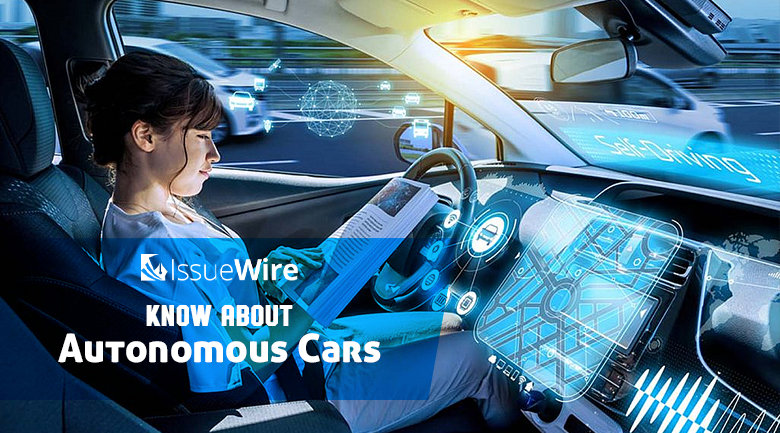An autonomous car is a type of vehicle that does not need any driver inside. It, even, does not require a single passenger to take control of the vehicle. An autonomous car can drive anywhere as traditional cars do. However, not a single human being is required to stay inside the car.
Six levels of driving automation have been defined by the Society of Automotive Engineers ranging from 0(fully manual) to level 5(fully autonomous).
Six levels are-
1. No automation- Manual control; a human driver controls the car
2. Driver Assistance- It features a single automated process. It monitors the process through cruise control.
3. Partial Automation- It can steer the car and accelerate the speed
4. Conditional automation- It features environmental detection
5. High Automation- The vehicle can perform all driving tasks under special circumstances. A human driver can be an option
6. Full Automation- It can perform all tasks, without any human intervention.
Differences between Autonomous, automated and self-driving:
The SAE prefers to use automated instead of autonomous. The autonomous term is beyond the usage of electromechanical science. A fully autonomous car will be a self-driving and a self-aware car that can make choices as per the situation. As an example- if you command the car “drive me to work”, it will drive you to your workplace, or it can take you to the mountains for a tour. This is what autonomous means, which drives the carrier as per the will. However, an automated car will drive you only to your workplace.
The name - the self-driving car is often taken with autonomous cars. However, they are of different types. A self-driving car can drive in all situations though. A human being needs to be present inside the car. The self-driving car comes under the Conditional driving automation category or the High Automation category.
How does an autonomous car work?
An autonomous car relies on sensors, complex algorithms, actuators, machine learning systems, and powerful processors to control the A-Z of the car.
An autonomous car creates and maintains a map and analyzes the traffic or any object surrounding it through its sensors. Its radar sensors monitor the vehicles around. Its video camera detects the traffic lights and looks for the pedestrians and danger signboards. Lidar sensors detect lights from the arriving cars, measure distances to avoid a collision, and detect edges while parking the car.
The software collects all the sensory inputs and sends them to the car actuators that control steering, braking, and acceleration. The hard coded rules, an algorithm to avoid a collision, help the car follow the traffic rules without a mistake.
Challenges with the autonomous cars:
Type 5 and Type 6 autonomous cars are now being tested through several stages of examination. Companies from different parts of the world are hiring engineers to make these two types of cars 100% error-free. But, some challenges are faced by engineers worldwide despite taking adequate measures to resolve them.
1. Lidar and Radar:
Lidar is very expensive, and it still has some problems identifying the objects in front of it. The question is - if many autonomous cars are there on the road, would the Lidar system interfere with each other? This challenge is technical, philosophical, legislative, and environmental.
2. Weather challenges:
Will the Lidar survive the challenges thrown by the extreme weather condition? The cameras and sensors may face difficulties working in extreme weather conditions.
3. Road safety regulations:
The government of different countries may not be open to autonomous cars if they find a minor problem with the cars.
The AI lacks emotional intelligence. It may not make an eye-contact with the pedestrians and drivers in front of the car. So, one of the biggest challenges for engineers is to develop EI in autonomous cars.








